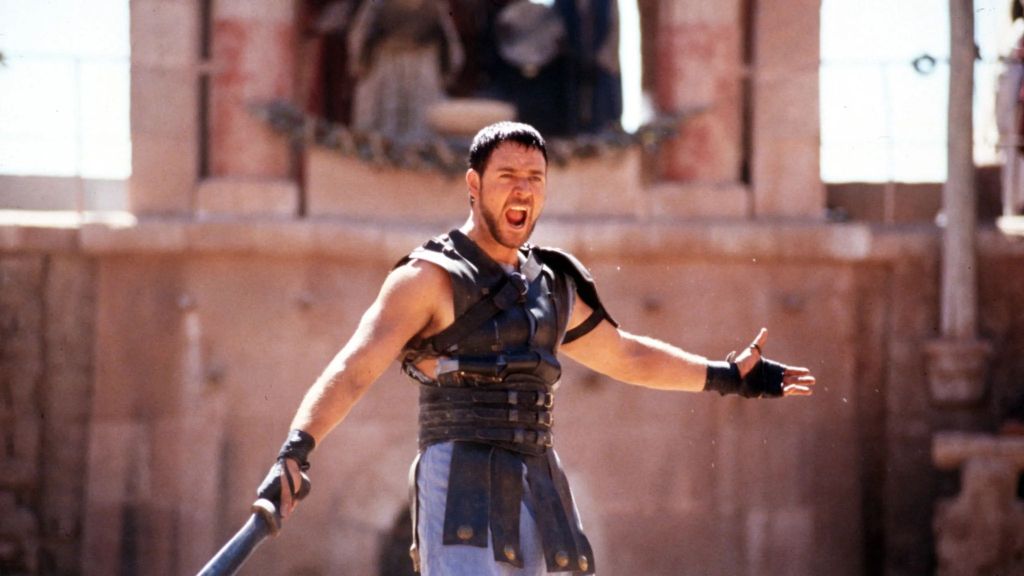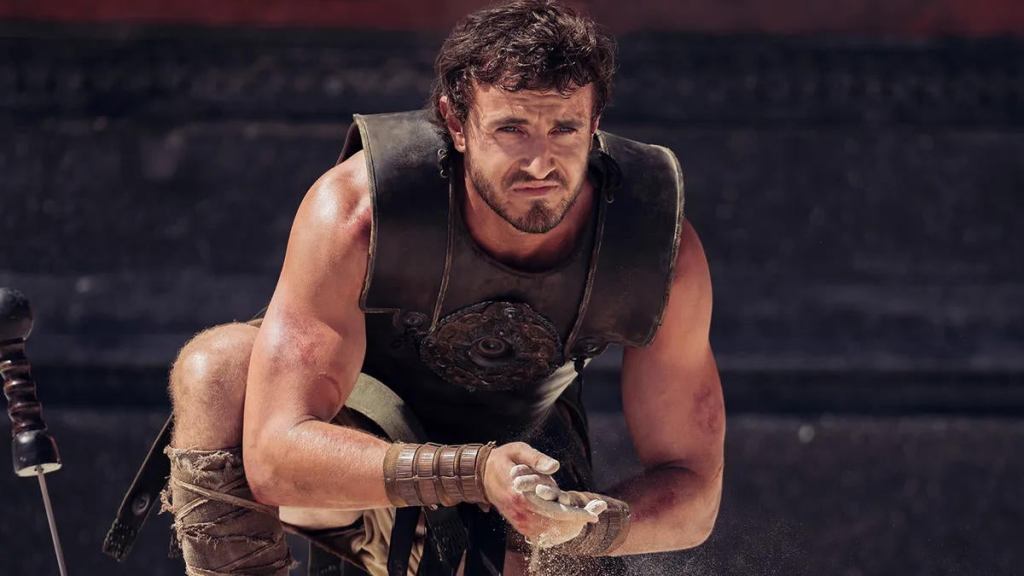Gladiator II is a historical fiction, and for some viewers, the emphasis is on “fiction.” The movie does not have any fantastical elements and is pretty good about avoiding anachronisms, but it doesn’t depict real history either. Read on for some of the key differences, but fair warning – there are spoilers ahead!
Long-time fans have been down this rabbit hole before when Gladiator was released in 2000. Historians have had two and a half decades to pick through that movie and find all the inaccuracies and inconsistencies in the movie, and those are only exacerbated in Gladiator II because it’s a direct sequel. It will carry over any issues from Gladiator and compound them with new content – which isn’t a problem as long as the audience understands that.
Background
Gladiator is about a general-turned-gladiator named Maximus (Russell Crowe), who was created just for the film. He is likely a fictionalized combination of the historical general Marcus Nonius Macrinus and the slave revolt leader Spartacus. The movie depicted Roman Emperor Marcus Aurelius (Richard Harris) murdered by his son Commodus (Joaquin Phoenix), which is not what happened in real life. Aurelius died from an illness – likely either smallpox or measles, according to historians. Perhaps more importantly, historians do not believe Aurelius wanted to restore Rome to a republic rather than an empire, as depicted on screen. That changes the depiction of many other characters considerably as well.
While Commodus’ reign was short-lived in Gladiator, the reality is that he ruled Rome for about 12 years. He was not killed in the Colosseum, but was instead murdered by a wrestler named Narcissus. That changes the story of the 16 years between those two movies. Other changes are less impactful on the plot, or they come up later in the sequel.

Colosseum Naval Battles
Believe it or not, historians say the depiction of staged naval battles in this movie is quite accurate. It’s true that the Romans built a massive system to flood the Colosseum, although it was only done early on when the Colosseum was first constructed. It would not have been done after the time of Commodus, but since this is a fictional timeline altogether, it’s easier to forgive.
Colosseum Animals
The bigger gripe is with the animals in the colosseum battles. Many critics have pointed out there were never sharks in the naumachia, and this is an issue that pulls some viewers out of the experience. It’s hard to imagine how ancient people could keep sharks alive, transport them over land and house them in the Colosseum.
On the other hand, the depiction of baboons, rhonoceros and other animals in the Colosseum is quite accurate. Gladiators would fight animals from all over the Roman empire for the entertainment of the crowd.

Lucius Verus
The real-life story of Lucius Verus is generally confusing to research and compare to this movie because there were two men with that name. Commodus’ sister Lucilla (Connie Nielsen) married a man named Lucius Verus who was like a foster brother to Marcus Aurelius and even reigned with him as co-emperor during his life. Lucius and Lucilla had a son who was also named Lucius Verus, and that’s the man Paul Mescal is playing in this movie. However, the second Lucius Verus died young, meaning the story laid out in Gladiator II is fictitious.
Lucius’ reunion with Lucilla is made up for the film as well. The real Lucilla was executed by Commodus two years into his reign, in the year 182 AD.
Siege of Numidia
One glaring issue with this story is Roman attack on Numidia, where Lucius is captured and enslaved. By the time of this movie, Numidia had already been a Roman province for over two centuries, so it’s hard to imagine why Rome would be attacking and raiding this way. Critics are speculating that the biggest reason for this contrivance is to showcase the nautical power of Rome, which will become more important later in the film.

Timeline
To wrap this up, let’s compare the true historical record of Roman emperors during this period with the movie’s depiction. In real life, Marcus Aurelius ruled from 161 AD until 180 AD, embracing his son Commodus as co-emperor for the last three years of his life. Commodus ruled until his death in 192 AD, leaving behind a power vaccuum that earned 193 AD the nickname “Year of the Five Emperors. After that, Roman general Septimius Severus seized power and ruled until 211 AD when he died on a campaign in England. His sons, Geta and Caracalla, succeeded him as co-emperors, but Caracalla killed Geta shortly after the funeral to make himself the sole ruler.
By comparison, Gladiator begins in 180 AD with the death of Marcus Aurelius and the ascension of Commodus, who tries to have Maximus killed. Maximus is enslaved and sold to a gladiator trainer instead, and returns to Rome shortly to fight in an extravagant tournament held to honor the death of Marcus Aurelius. It’s unclear how much time passes in the movie, but it does not seem to be a matter of years. Eventually Commodus is forced to face Maximus in the Colosseum, where he is killed.
[RELATED: Gladiator 2: Everything to Remember About the Original Film Before the Sequel]
Gladiator II picks up 16 years after Maximus’ death, This could be as early as 196 AD, but considering that Caracalla and Geta are enthroned, it more accurately matches 211 AD. This was the only time the two brothers were alive and ruling together, though it likely wasn’t for this long.
All in all, Gladiator II is as successful as its predecessor at using real history as a framework to tell a compelling story for the modern day. It is impressively accurate in some ways, intentionally dramatized in others, and only has a few major inaccuracies as far as historians are concerned. As long as viewers don’t assume the movie is completely factual, it’s a harmless spectacle. Gladiator II is playing now in theaters. Gladiator is streaming on Paramount+.
The post Gladiator II: Explaining the Real Roman History Behind the Film appeared first on ComicBook.com.

